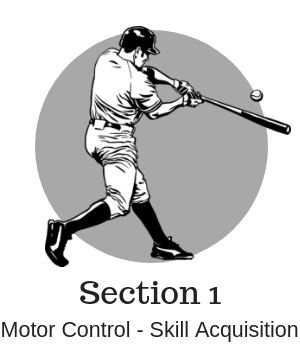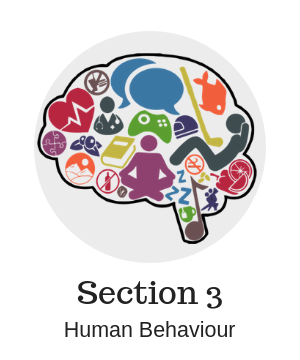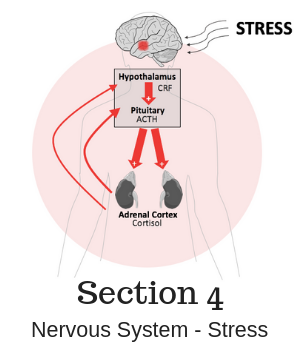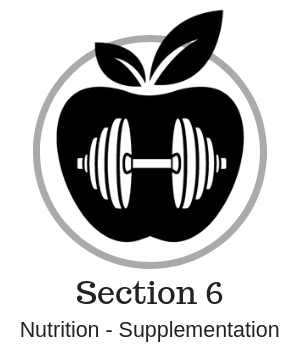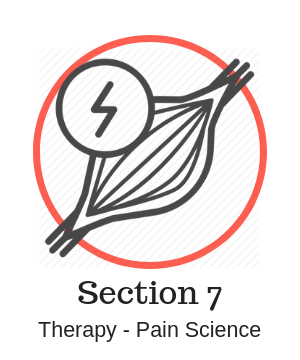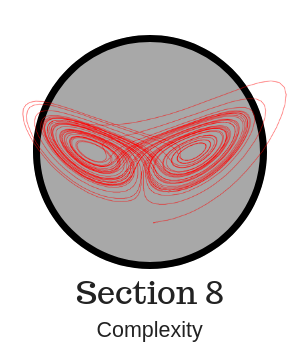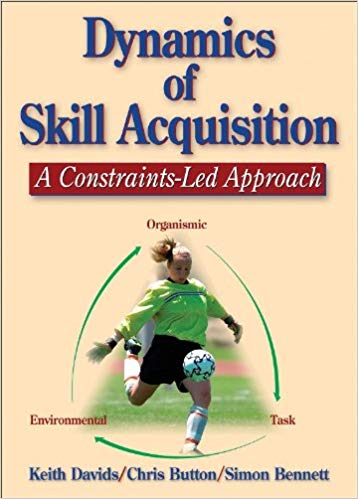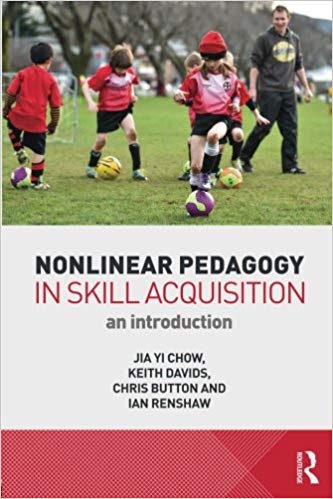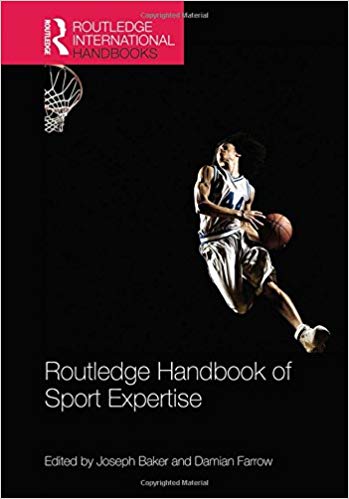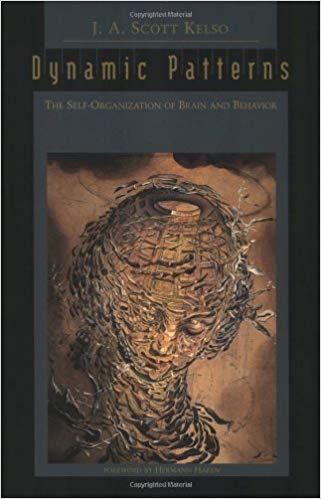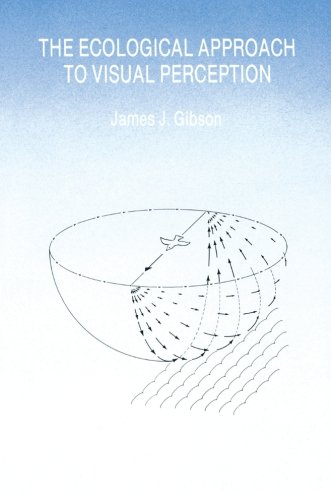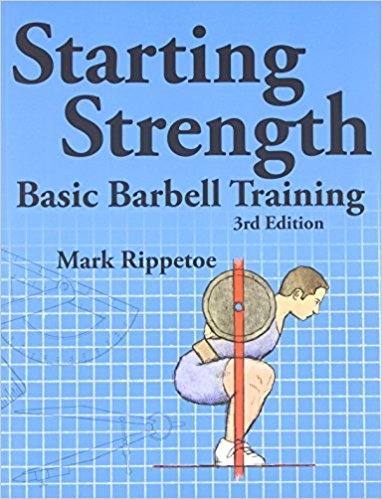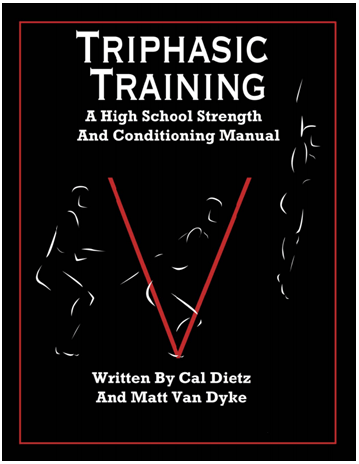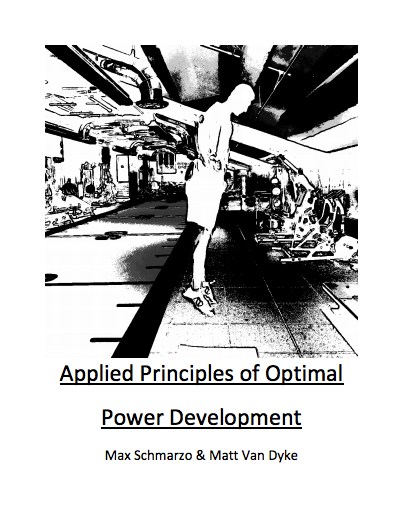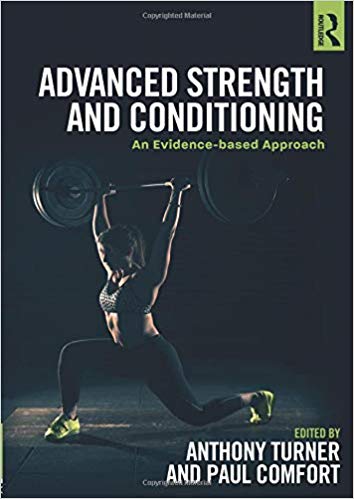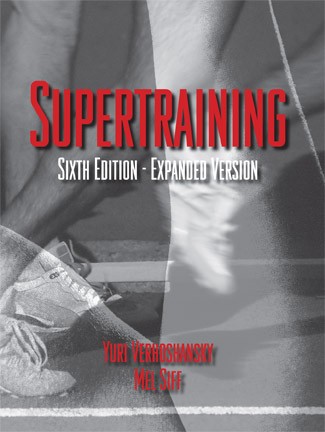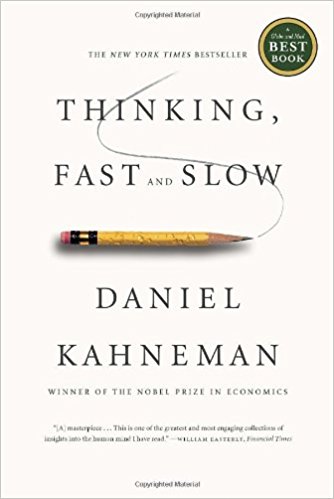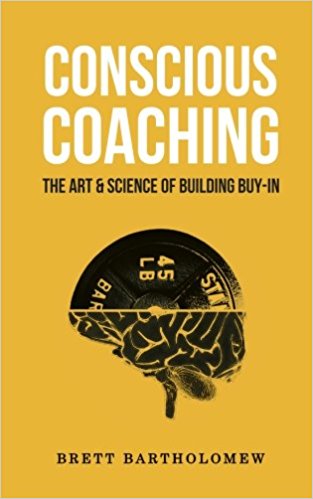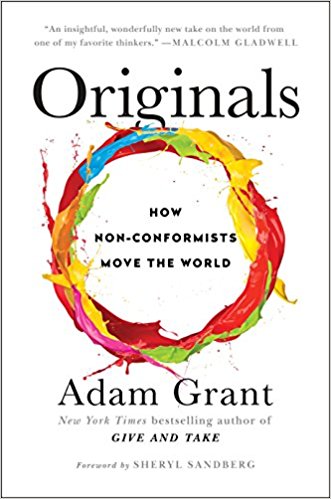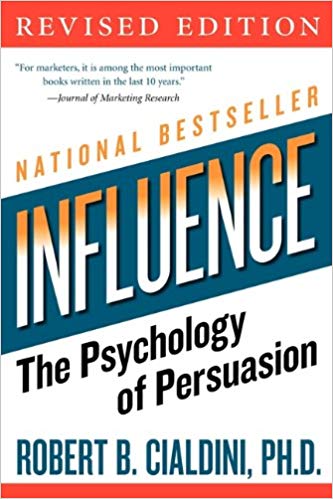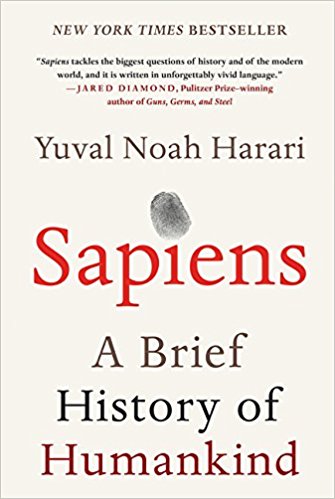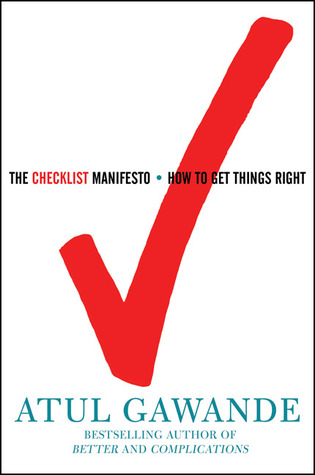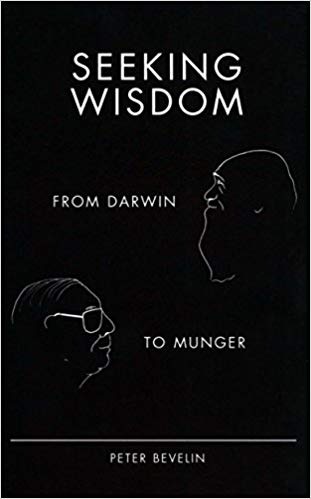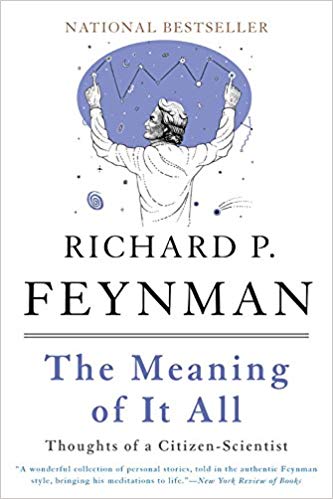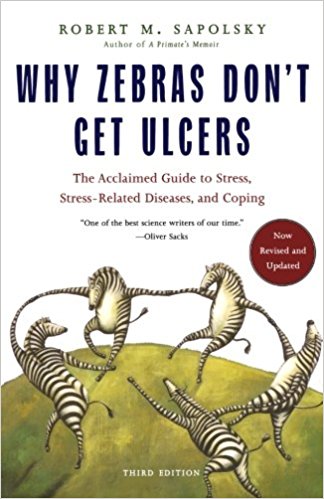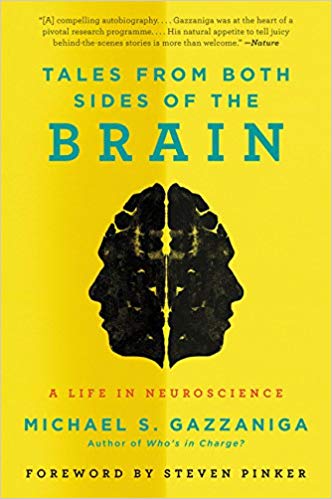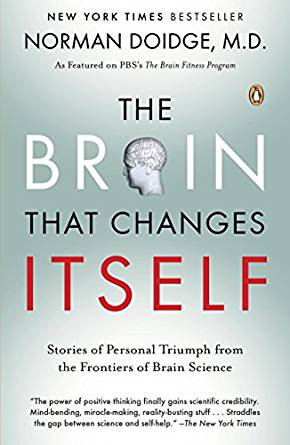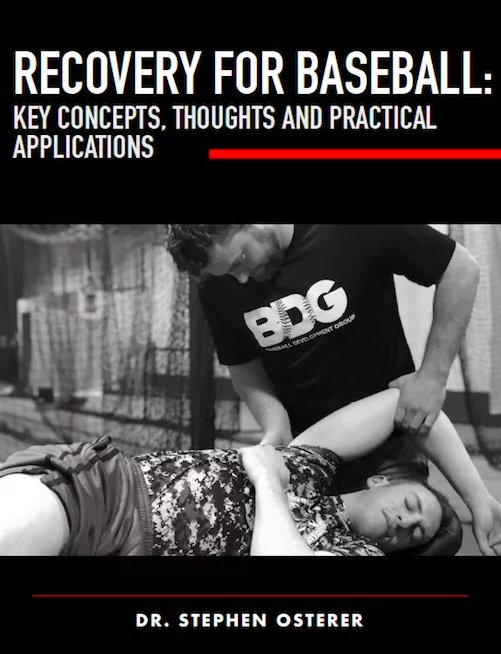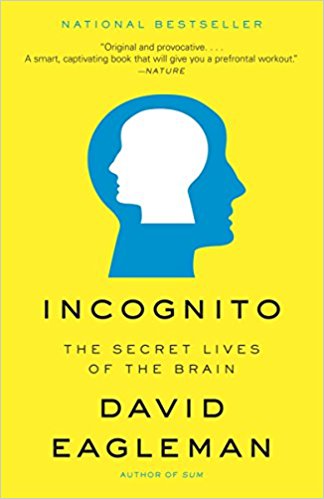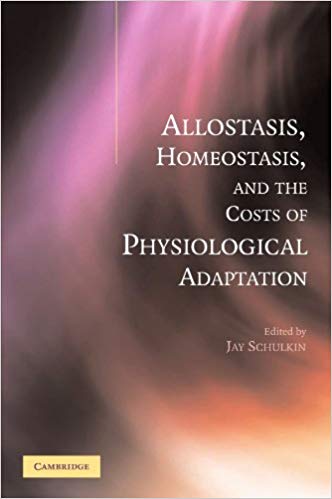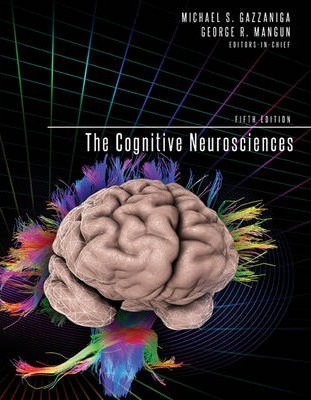BASEBALL RESOURCE GUIDE
Expand your web of knowledge
For the aspiring baseball coach, parent, or player, it can be a daunting task to start learning about topics that aren’t directly baseball; motor control, strength & conditioning, human behavior, the brain, among others.
GOOD NEWS! We’ve already done everything for you. We’ve gathered some of our favourite non-specific baseball resources and put them all into one place.

Seeking out high-quality baseball information is difficult. It’s even more difficult seeking out high-quality information that’s related to baseball in closely related fields. This is especially true if you’re unfamiliar with the general landscape of what’s out there. If you were a hitting coach looking to grow your sports performance knowledge base, where would you source out info on motor control & skill acquisition?
After hiring our newest intern, I decided that it was a good idea to lay out some of the resources that have helped shape the BDG model. A collection of what I believe to be foundational textbooks to read, videos to watch, authors to follow, and informational sources to explore that aren’t directly baseball.
If you’re thinking to yourself, “why would I care to know about this stuff?”, I’ve tried to address that at the end.
These are all resources that I have spent time working through, have found tremendous value in, and would recommend to others in a heartbeat. Please do not take this as a course curriculum; that after going through will somehow graduate you to some mystical elite level of baseball person. In no way do I believe that I have all the answers, that this is ‘the list’, or even close to all you need to be successful in the baseball world.
Rather, I believe that these are highly insightful sources of information that may solidify your current knowledge base, challenge your beliefs, or open up new avenues to explore. As time goes by, I hope to update this resource page and add individual breakdowns & takeaways, so that the entire baseball community can further grow.
Seeking out high-quality baseball information is difficult. It’s even more difficult seeking out high-quality information that’s related to baseball in closely related fields. This is especially true if you’re unfamiliar with the general landscape of what’s out there. If you were a hitting coach looking to grow your sports performance knowledge base, where would you source out info on motor control & skill acquisition?
After hiring our newest intern, I decided that it was a good idea to lay out some of the resources that have helped shape the BDG model. A collection of what I believe to be foundational textbooks to read, videos to watch, authors to follow, and informational sources to explore that aren’t directly baseball.
If you’re thinking, “why would I care to know about this stuff?” I’ve tried to address that at the end.
These are all resources that I have spent time working through, have found tremendous value in, and would recommend to others in a heartbeat. Please do not take this as a course curriculum; that after going through will somehow graduate you to some mystical elite level of baseball person. In no way do I believe that I have all the answers, that this is ‘the list’, or even close to all you need to be successful in the baseball world.
Rather, I believe that these are highly insightful sources of information that may solidify your current knowledge base, challenge your beliefs, or open up new avenues to explore. As time goes by, I hope to update this resource page and add individual breakdowns & takeaways, so that the entire baseball community can further grow.
HOW IT’S LAID OUT
HOW IT’S LAID OUT
I’ve separated the resources into broad categories, with no particular order of importance. Within each category, I then attempted to separate the textbooks into ‘starting spots’ for the uninitiated, ‘next steps’ if you’re feeling more confident, and ‘deep dives’ if you want a challenge. Each section will also include books, videos, blog posts, or key research articles which are not ordered into difficulty.
I’ve separated the resources into broad categories, with no particular order of importance. Within each category, I then attempted to separate the textbooks into ‘starting spots’ for the uninitiated, ‘next steps’ if you’re feeling more confident, and ‘deep dives’ if you want a challenge. Each section will also include books, videos, blog posts, or key research articles which are not ordered into difficulty.
Want the PDF version instead?
SECTION 1:
Motor Control – Skill Acquisition
One of the trending topics in baseball has quickly become skill acquisition and motor control & learning. Concepts like self-organization, the constraints-led approach, and motor variability will inevitably gain traction into the mainstream, which means that you should probably have a good handle on them if you want to keep up.

START HERE
START HERE
Dynamics of Skill Acquisition
Davids, Button, Bennett
Usually the first resource that I guide people towards when they want a general overview on the topic of skill acquisition. It’s the least dense of the resources in this section but does a tremendous job of outlining the basic principles, theories, and practical applications of skill acquisition theory and the constraints-led approach. A digestible text that will surely set you on the right path.
Dynamics of Skill Acquisition
Davids, Button, Bennett
Usually the first resource that I guide people towards when they want a general overview on the topic of skill acquisition. It’s the least dense of the resources in this section but does a tremendous job of outlining the basic principles, theories, and practical applications of skill acquisition theory and the constraints-led approach. A digestible text that will surely set you on the right path.
Nonlinear Pedagogy in Skill Acquisition
Chow, Davids, Button, Renshaw
The book explores the theoretical framework of nonlinear pedagogy, outlines its key principles, and provides cases and examples in each chapter. A good next step after the Dynamics of Skill Acquisition, as it’s a bit denser and covers more ground.
Nonlinear Pedagogy in Skill Acquisition
Chow, Davids, Button, Renshaw
The book explores the theoretical framework of nonlinear pedagogy, outlines its key principles, and provides cases and examples in each chapter. A good next step after the Dynamics of Skill Acquisition, as it’s a bit denser and covers more ground.
NEXT STEPS
NEXT STEPS
Routledge Handbook of Sport Expertise
Edited by Baker, Farrow
Usually the first resource that we guide people towards when they want a general reference textbook on skill acquisition. It’s the least dense of the resources here but does a tremendous job of outlining the basic principles, theories, and practical applications of contemporary skill acquisition theory. It has all of the big names in the field contributing to it and is therefore a phenomenal source of citations and references to dig into.
Routledge Handbook of Sport Expertise
Edited by Baker, Farrow
Usually the first resource that we guide people towards when they want a general reference textbook on skill acquisition. It’s the least dense of the resources here but does a tremendous job of outlining the basic principles, theories, and practical applications of contemporary skill acquisition theory. It has all of the big names in the field contributing to it and is therefore a phenomenal source of citations and references to dig into.
Motor Learning in Practice: A Constraints-Led Approach
Edited by Renshaw, Davids, Savelsbergh
A great book if you want to further your understanding of ecological dynamics, the interaction of organism, environment and task, or a constraints-led approach. The first few chapters lay the foundation and theoretical underpinnings of motor learning and the constraints-led approach before getting into specific chapters on their application to sport.
Motor Learning in Practice: A Constraints-Led Approach
Edited by Renshaw, Davids, Savelsbergh
A great book if you want to further your understanding of ecological dynamics, the interaction of organism, environment and task, or a constraints-led approach. The first few chapters lay the foundation and theoretical underpinnings of motor learning and the constraints-led approach before getting into specific chapters on their application to sport.
Dexterity and Its Development
Nicholai Bernstein
If you’re into studying movement, in any capacity, then you’ve probably heard of Nicholai Bernstein at some point. If you haven’t had a chance to read any of his original work, then I’d highly recommend getting into it. Dexterity and it’s Development gives a history lesson on the degrees of freedom problem, insight into Bernstein’s thought process of solving it, and how far ahead of his time he really was.
Dexterity and Its Development
Nicholai Bernstein
If you’re into studying movement, in any capacity, then you’ve probably heard of Nicholai Bernstein at some point. If you haven’t had a chance to read any of his original work, then I’d highly recommend getting into it. Dexterity and it’s Development gives a history lesson on the degrees of freedom problem, insight into Bernstein’s thought process of solving it, and how far ahead of his time he really was.
DEEPER DIVE
DEEPER DIVE
Dynamic Patterns
J.A Scott Kelso
After reading Bernstein’s original work, I dove into Kelso’s Dynamic Patterns, as he was one of the pioneers pushing the field forwards. Along with Haken and Bunz, Kelso’s HKB model provided a novel framework for understanding movement coordination – revealing the features of self-organization. This book goes into great detail explaining complex systems, their unique characteristics and behavior, and how self-organization is a fundamental process in pattern formation.
Dynamic Patterns
J.A Scott Kelso
After reading Bernstein’s original work, I dove into Kelso’s Dynamic Patterns, as he was one of the pioneers pushing the field forwards. Along with Haken and Bunz, Kelso’s HKB model provided a novel framework for understanding movement coordination – revealing the features of self-organization. This book goes into great detail explaining complex systems, their unique characteristics and behavior, and how self-organization is a fundamental process in pattern formation.
The Ecological Approach to Visual Perception
James Gibson
If you aren’t familiar with the ecological dynamics, or James Gibson, then this book may be an eye-opener (pun intended). As one of the fathers in the field, Gibson was one of the first to propose visual information as a direct perceptual cue for behaviour; the concept of affordances. The book is dense and advanced, but a fantastic read for those wanting to go down a new rabbit hole.
The Ecological Approach to Visual Perception
James Gibson
If you aren’t familiar with the ecological dynamics, or James Gibson, then this book may be an eye-opener (pun intended). As one of the fathers in the field, Gibson was one of the first to propose visual information as a direct perceptual cue for behaviour; the concept of affordances. The book is dense and advanced, but a fantastic read for those wanting to go down a new rabbit hole.
OTHER RESOURCES
OTHER RESOURCES
The Perception and Action Podcast – Rob Gray Rob Gray’s podcast, Perception and Action, is a gold mine of information related to skill acquisition, psychology, sports science and performance. Not only is Rob a leading researcher on these topics themselves, but he also has a special interest in baseball studied (and continuing to) several topics related to the sport. Once you discover this podcast, it’ll be hard not to want to just listen to every podcast in a week. These are just a collection of my personal favourites.
- Vision and Gaze Behaviour In Baseball Batting
- Differential Learning
- Interview with Keith Davids
- The Constraints-Led Approach to Coaching Series (I, II, III)
- The Legacy of Nikolai Bernstein Series (I,II,III)
VIDEOS
Dynamic Systems Theory and Baseball – Dr. Stephen Osterer & Dr. Michael Chivers
Non-representational Perception & Action – Michael Turvey
Ecological Dynamics in Analysis of Performance in Team Sports – Keith Davids
RESEARCH ARTICLES
Bernstein’s Levels of Movement Construction: A Contemporary Perspective – Turvey, Profeta (2018)
Towards a Grand Unified Theory of Sports Performance – Paul Glazier (2015)
Beyond the Blank Slate: Routes to Learning New Coordination Patterns Depend on the Intrinsic Dynamics of the Learner – Experimental Evidence and Theoretical Model – Kostrubiec et al (2012)
The Bliss of Motor Abundance – Mark Latash (2012)
Optimizing performance through intrinsic motivation and attention for learning: the OPTIMAL theory of motor learning – Wulf, Lewthwaite (2016)
Nature of Motor Control: Perspectives and Issues – Turvey, Fonseca (2013)
Coordination, Control, and Skill – K. Newell (1984)
Time Scales in Motor Learning and Development – K. Newell (2001)
WEBSITES
The Perception and Action Podcast – Rob Gray
Rob Gray’s podcast, Perception and Action, is a gold mine of information related to skill acquisition, psychology, sports science and performance. Not only is Rob a leading researcher on these topics themselves, but he also has a special interest in baseball studied (and continuing to) several topics related to the sport. Once you discover this podcast, it’ll be hard not to want to just listen to every podcast in a week. These are just a collection of my personal favourites.
- Vision and Gaze Behaviour In Baseball Batting
- Differential Learning
- Interview with Keith Davids
- The Constraints-Led Approach to Coaching Series (I, II, III)
- The Legacy of Nikolai Bernstein Series (I,II,III)
VIDEOS
Dynamic Systems Theory and Baseball – Dr. Stephen Osterer & Dr. Michael Chivers
Non-representational Perception & Action – Michael Turvey
Ecological Dynamics in Analysis of Performance in Team Sports – Keith Davids
RESEARCH ARTICLES
Bernstein’s Levels of Movement Construction: A Contemporary Perspective – Turvey, Profeta (2018)
Towards a Grand Unified Theory of Sports Performance – Paul Glazier (2015)
Beyond the Blank Slate: Routes to Learning New Coordination Patterns Depend on the Intrinsic Dynamics of the Learner – Experimental Evidence and Theoretical Model – Kostrubiec et al (2012)
The Bliss of Motor Abundance – Mark Latash (2012)
Optimizing performance through intrinsic motivation and attention for learning: the OPTIMAL theory of motor learning – Wulf, Lewthwaite (2016)
Nature of Motor Control: Perspectives and Issues – Turvey, Fonseca (2013)
Coordination, Control, and Skill – K. Newell (1984)
Time Scales in Motor Learning and Development – K. Newell (2001)
WEBSITES
SECTION 2:
Strength & Conditioning
Physical preparation, from adequate strength to qualities of fitness, is an integral component to staying healthy and improving performance. It is also, unfortunately, one of the hats that most coaches and players are forced to wear throughout their careers. Taking the time to build a more thorough understanding of some of the basic principles of strength & conditioning can pay off dividends over the long-term.

START HERE
START HERE
Starting Strength
Mark Rippetoe
This is an excellent place to start if you are a beginner and want an introduction to the world of lifting. Rippetoe walks you through the big lifts (squat, press, deadlift, bench press, power clean, and the power snatch), how to perform them with technical proficiency, and how to program them into a routine when you’re just starting out. Honestly, you could get by for a long time just on this book. I’m looking at you functional fitness freaks!
Starting Strength
Mark Rippetoe
This is an excellent place to start if you are a beginner and want an introduction to the world of lifting. Rippetoe walks you through the big lifts (squat, press, deadlift, bench press, power clean, and the power snatch), how to perform them with technical proficiency, and how to program them into a routine when you’re just starting out. Honestly, you could get by for a long time just on this book. I’m looking at you functional fitness freaks!
Triphasic Training
Dietz, Van Dyke
To say that the Triphasic system has been an influence on how we train our athletes would be an understatement. It’s been the foundation in our strength training since 2012. Central to the Triphasic philosophy is the concept of breaking down foundational movements into their three components – eccentric, isometric, and concentric – and prioritizing specific micro-cycles towards them. Seeing that our nervous system adapts to and controls these components separately, it makes sense that we should spend time developing them individually. Whether we are working with novice or advanced athletes, we will almost always run them through a triphasic block in the early off-season to teach positioning, get numbers up, and build intent.
Triphasic Training
Dietz, Van Dyke
To say that the Triphasic system has been an influence on how we train our athletes would be an understatement. It’s been the foundation in our strength training since 2012. Central to the Triphasic philosophy is the concept of breaking down foundational movements into their three components – eccentric, isometric, and concentric – and prioritizing specific micro-cycles towards them. Seeing that our nervous system adapts to and controls these components separately, it makes sense that we should spend time developing them individually. Whether we are working with novice or advanced athletes, we will almost always run them through a triphasic block in the early off-season to teach positioning, get numbers up, and build intent.
NEXT STEPS
NEXT STEPS
Strength & Conditioning: Biological Principles and Practical Applications
Edited by Cardinale, Newtown, Nosaka
In my opinion, this is the best strength and conditioning resource available that stays grounded in first principles. Whether you are a hitting coach responsible for the team’s strength & conditioning or a CSCS with years of experience, you’ll want something to root yourself in. As new trends and gimmicks come and go, basic biological principles will serve as your ‘BS filter’ and this textbook will be your best friend.
Strength & Conditioning: Biological Principles and Practical Applications
Edited by Cardinale, Newtown, Nosaka
In my opinion, this is the best strength and conditioning resource available that stays grounded in first principles. Whether you are a hitting coach responsible for the team’s strength & conditioning or a CSCS with years of experience, you’ll want something to root yourself in. As new trends and gimmicks come and go, basic biological principles will serve as your ‘BS filter’ and this textbook will be your best friend.
Applied Principles of Optimal Power Development
Schmarzo, Van Dyke
Once you’ve built a solid foundation of strength, you’re going to want to start thinking about what’s next – oftentimes, the answer is power development. This book presents current concepts, ideas, and practical applications of developing power in the weight room. It’s a very good continuation after reading Triphasic Training, but fair warning there’s a lot on velocity-based training. So it may not be a good fit!
Applied Principles of Optimal Power Development
Schmarzo, Van Dyke
Once you’ve built a solid foundation of strength, you’re going to want to start thinking about what’s next – oftentimes, the answer is power development. This book presents current concepts, ideas, and practical applications of developing power in the weight room. It’s a very good continuation after reading Triphasic Training, but fair warning there’s a lot on velocity-based training. So it may not be a good fit!
Ultimate MMA Conditioning
Joel Jameson
Still one of my favorite reads on conditioning, especially when it comes to practically applying it to with an athletic population. Several years ago, when HIIT was all the rage, Ultimate MMA Conditioning came out and reminded people of the need for aerobic capacity. This book does an exceptional job of outlining the theory behind building an appropriate conditioning plan as well as the methodologies. It is not a dense read so it serves as a good intro.
Ultimate MMA Conditioning
Joel Jameson
Still one of my favorite reads on conditioning, especially when it comes to practically applying it to with an athletic population. Several years ago, when HIIT was all the rage, Ultimate MMA Conditioning came out and reminded people of the need for aerobic capacity. This book does an exceptional job of outlining the theory behind building an appropriate conditioning plan as well as the methodologies. It is not a dense read so it serves as a good intro.
DEEPER DIVE
DEEPER DIVE
Advanced Strength & Conditioning: An Evidence-Based Approach
Edited by Turner, Comfort
A more advanced strength and conditioning textbook that goes through the principles of testing, motor skill acquisition, developing power, and monitoring training load and fatigue. The textbook is loaded with references, studies, and citations that make it an excellent resource to revisit over time. If you’re looking the next step practically then this might be it.
Advanced Strength & Conditioning: An Evidence-Based Approach
Edited by Turner, Comfort
A more advanced strength and conditioning textbook that goes through the principles of testing, motor skill acquisition, developing power, and monitoring training load and fatigue. The textbook is loaded with references, studies, and citations that make it an excellent resource to revisit over time. If you’re looking the next step practically then this might be it.
Supertraining
Siff, Verkhoshansky
Supertraining is commonly referred to as the bible of training books and for good reason. Every time I dig back into it I find something new; sometimes a subtle nuance, other times it’s describing a current trend years before it came to be a thing. This book is a classic, but a dense read unless you’re already knowledgeable in the domain.
Supertraining
Siff, Verkhoshansky
Supertraining is commonly referred to as the bible of training books and for good reason. Every time I dig back into it I find something new; sometimes a subtle nuance, other times it’s describing a current trend years before it came to be a thing. This book is a classic, but a dense read unless you’re already knowledgeable in the domain.
Monitoring Training and Performance in Athletes
Mike McGuigan
The best textbook that I’ve come across regarding athlete monitoring. McGuigan thoroughly reviews the scientific literature to present the why, what, and most importantly, how of monitoring fatigue and performance. If you’re looking to broaden your depth of understanding beyond just counting pitches, then I’d recommend you check this out. Friendly word of caution – it’s a textbook on monitoring literature so please do not be alarmed by its density or lack of entertainment value.
Monitoring Training and Performance in Athletes
Mike McGuigan
The best textbook that I’ve come across regarding athlete monitoring. McGuigan thoroughly reviews the scientific literature to present the why, what, and most importantly, how of monitoring fatigue and performance. If you’re looking to broaden your depth of understanding beyond just counting pitches, then I’d recommend you check this out. Friendly word of caution – it’s a textbook on monitoring literature so please do not be alarmed by its density or lack of entertainment value.
OTHER RESOURCES
OTHER RESOURCES
WEBSITES, SPECIFIC POSTS, REARCH ARTICLES
How to Squat, Deadlift, Bench Press – Greg Nuckols
Monitoring Athlete Training Loads: A Consensus Statement – Bourdon et al (2017)
A “Coaches” Guide to Strength Development Series – Stu McMillan
Strength & Conditioning Research
COURSES
Bondarchuk System – Derek Evely Just recently went through Derek Evely’s course on the Bondarchuk method and was really pleased with how accessible the information was. Not just that, but there’s a pretty good forum and discourse going on within the course itself. For anyone that has considered studying Bondarchuk methods but has shied away because of the difficulty of the textbooks, this is a good option.
WEBSITES & ARTICLES
How to Squat, Deadlift, Bench Press – Greg Nuckols
Monitoring Athlete Training Loads: A Consensus Statement – Bourdon et al (2017)
A “Coaches” Guide to Strength Development Series – Stu McMillan
Strength & Conditioning Research
COURSES
Bondarchuk System – Derek Evely Just recently went through Derek Evely’s course on the Bondarchuk method and was really pleased with how accessible the information was. Not just that, but there’s a pretty good forum and discourse going on within the course itself. For anyone that has considered studying Bondarchuk methods but has shied away because of the difficulty of the textbooks, this is a good option.
SECTION 3:
Human Behaviour
We should keep in mind that athletic performance is a biopsychosocial endeavour and that we must look beyond just the ‘bio’. The psychological and social aspects are equally, if not more, important. We are dealing with human beings – not numbers on a piece of paper. From effecting decision-making to understanding the evolution of our species this section covers some of my favourite reads.

BOOKS
BOOKS
Thinking, Fast and Slow
Daniel Kahneman
My step one for this section, as it’s one of the best books on human behaviour. Kahneman outlines our ability to think both fast (instinctively) and slow (rationally), the biases that we are prone to, and how illogical we can be. Going through this book was a sobering experience – causing a lot of reflection and attempting to sort through my own filters on the world. The importance of the book will greatly outweigh its density & page count.
Thinking, Fast and Slow
Daniel Kahneman
My step one for this section, as it’s one of the best books on human behaviour. Kahneman outlines our ability to think both fast (instinctively) and slow (rationally), the biases that we are prone to, and how illogical we can be. Going through this book was a sobering experience – causing a lot of reflection and attempting to sort through my own filters on the world. The importance of the book will greatly outweigh its density & page count.
Conscious Coaching: The Art and Science of Building Buy-In
Brett Bartholomew
Conscious Coaching is an authentic plea for the strength & conditioning world to put as much mastery into the art of relationships as they do into the physical components of training. Although written with the strength coach in mind, the ideas of engagement, communication, buy-in, and athlete archetypes are easily transferable to coaches in any domain. If you haven’t read this book yet, you’re seriously missing out.
Conscious Coaching: The Art and Science of Building Buy-In
Brett Bartholomew
Conscious Coaching is an authentic plea for the strength & conditioning world to put as much mastery into the art of relationships as they do into the physical components of training. Although written with the strength coach in mind, the ideas of engagement, communication, buy-in, and athlete archetypes are easily transferable to coaches in any domain. If you haven’t read this book yet, you’re seriously missing out.
Originals: How Non-Conformists are Moving the World
Adam Grant
Originals is all about creativity, originality, and knocking the door down of the status quo. Grant outlines how the most successful divergent thinkers came to be and provides practical insights into how we can do that for ourselves. Whether that’s immersing yourself in a new domain of knowledge or using anxiety and emotion to your creative benefit, there are plenty of lessons to be learned from Grant.
Originals: How Non-Conformists are Moving the World
Adam Grant
Originals is all about creativity, originality, and knocking the door down of the status quo. Grant outlines how the most successful divergent thinkers came to be and provides practical insights into how we can do that for ourselves. Whether that’s immersing yourself in a new domain of knowledge or using anxiety and emotion to your creative benefit, there are plenty of lessons to be learned from Grant.
How to Win Friends and Influence People
Dale Carnegie
I hate being the guy who repeats everyone else who has ever put together a reading list, but it really is worth going through from time to time. The title is a bit misleading, in that it’s much less about winning friends and influencing people, and more about being in tune with how to treat another human being. When you’ve got a 100+ kids and parents rolling through your facility each night, you need to be able to interact with them.
How to Win Friends and Influence People
Dale Carnegie
I hate being the guy who repeats everyone else who has ever put together a reading list, but it really is worth going through from time to time. The title is a bit misleading, in that it’s much less about winning friends and influencing people, and more about being in tune with how to treat another human being. When you’ve got a 100+ kids and parents rolling through your facility each night, you need to be able to interact with them.
Principles
Ray Dalio
My favorite read of 2017. The book is broken into three different lengthy sections outlining the life and work principles of Ray Dalio – one of the most successful hedge fund managers in the world. A central theme to Principles is that both humans and businesses, need to be viewed from a systems perspective. For us (or a business) to be successful, we need to be able to see things as integrated and interactive units; thinking more on how one component influences another. What I enjoyed the most was Dalio’s emphasis that individuals (and businesses) should create their own list of principles to live by. A process that we’ve started implementing at BDG.
Principles
Ray Dalio
My favorite read of 2017. The book is broken into three different lengthy sections outlining the life and work principles of Ray Dalio – one of the most successful hedge fund managers in the world. A central theme to Principles is that both humans and businesses, need to be viewed from a systems perspective. For us (or a business) to be successful, we need to be able to see things as integrated and interactive units; thinking more on how one component influences another. What I enjoyed the most was Dalio’s emphasis that individuals (and businesses) should create their own list of principles to live by. A process that we’ve started implementing at BDG.
Influence: The Psychology of Persuasion
Robert Cialdini
Another classic, often taught in marketing circles, that investigates what makes us say ‘yes’. The examples may be a bit outdated but the principles – like reciprocity – still hold true. When I went through this, I remember relating it to the idea of protecting the subconscious in the movie Inception. It made me wonder; by consistently exposing ourselves to our own biases and mental frameworks is it possible that we can protect (or alter) our fast-thinking system (Kahneman’s ‘system one’)?
Influence: The Psychology of Persuasion
Robert Cialdini
Another classic, often taught in marketing circles, that investigates what makes us say ‘yes’. The examples may be a bit outdated but the principles – like reciprocity – still hold true. When I went through this, I remember relating it to the idea of protecting the subconscious in the movie Inception. It made me wonder; by consistently exposing ourselves to our own biases and mental frameworks is it possible that we can protect (or alter) our fast-thinking system (Kahneman’s ‘system one’)?
Sapiens: a Brief History of Humankind
Yuval Noah Harari
Just being a human being should make this mandatory reading. Harari elegantly presents our ‘story’ as a species; the fortunes, misfortunes, and events that have lead Homo Sapiens to where we are now. It’s impossible to give a good breakdown of all the ideas brought up in this book but I can assure you it’s one of the most interesting reads on the list. Homo Deus, his second book, was also exceptional, and I look forward to reading his latest book 21 Lessons for the 21st Century.
Sapiens: a Brief History of Humankind
Yuval Noah Harari
Just being a human being should make this mandatory reading. Harari elegantly presents our ‘story’ as a species; the fortunes, misfortunes, and events that have lead Homo Sapiens to where we are now. It’s impossible to give a good breakdown of all the ideas brought up in this book but I can assure you it’s one of the most interesting reads on the list. Homo Deus, his second book, was also exceptional, and I look forward to reading his latest book 21 Lessons for the 21st Century.
The Checklist Manifesto: How to Get Things Done
Atul Gawande
Incredibly, Gawande turns a seemingly mundane concept like how checklists can improve performance outcomes into a book that’s both entertaining and enlightening. The book describes how the implementation of checklists have helped surgeons saves lives, airline pilots reduce accidents, and investors save millions, all the while making you contemplate the inescapable nature of human error (even in experts). As a practitioner, it hammered home the importance of attempting to counteract these errors and re-think our systems (I talked about here).
The Checklist Manifesto: How to Get Things Done
Atul Gawande
Incredibly, Gawande turns a seemingly mundane concept like how checklists can improve performance outcomes into a book that’s both entertaining and enlightening. The book describes how the implementation of checklists have helped surgeons saves lives, airline pilots reduce accidents, and investors save millions, all the while making you contemplate the inescapable nature of human error (even in experts). As a practitioner, it hammered home the importance of attempting to counteract these errors and re-think our systems (I talked about here).
Thinking: The New Science of Decision-Making, Problem-Solving and Prediction
Edited by John Brockman
Thinking is essentially a collection of essays or verbal transcripts of presentations by some of the worlds most respected psychologists and thinkers. The chapters don’t need to be read in order, which is great, and you can skip around to find your favourite authors like Daniel Kahneman and Nassim Nicholas Taleb. The topics of decision-making, prediction, problem solving, morality, and intuition are discussed and I really like Thinking Big as an introduction to several mental models and authors to follow.
Thinking
Edited by John Brockman
Thinking is essentially a collection of essays or verbal transcripts of presentations by some of the worlds most respected psychologists and thinkers. The chapters don’t need to be read in order, which is great, and you can skip around to find your favourite authors like Daniel Kahneman and Nassim Nicholas Taleb. The topics of decision-making, prediction, problem solving, morality, and intuition are discussed and I really like Thinking Big as an introduction to several mental models and authors to follow.
Seeking Wisdom
Peter Bevelin
At the age of 42, Swedish investor Peter Bevelin decided that he wanted to take a year off from work “to be less dumb.” In the process, he studied and then wrote about some of the greatest thinkers in history to see if they had answers to some of the big questions; why we make the decisions that we make? How do we improve them? What is the purpose of life? Seeking Wisdom is what he came up with.
Seeking Wisdom
Peter Bevelin
At the age of 42, Swedish investor Peter Bevelin decided that he wanted to take a year off from work “to be less dumb.” In the process, he studied and then wrote about some of the greatest thinkers in history to see if they had answers to some of the big questions; why we make the decisions that we make? How do we improve them? What is the purpose of life? Seeking Wisdom is what he came up with.
The Meaning of it All
Richard Feynman
More on mental models, how to frame and solve problems, from one of the most renowned scientists and physicists of the 20th century. Feynman’s ability to step outside conventional thought, along with his charismatic personality, are a large part of his legend and really shine in The Meaning of it All. It’s a lecture series, turned into a book, and my recommendation for an introduction to Feynman. If you’re interested in his stuff, considering moving onto the Feynman technique or “Surely, you’re joking Mr. Feynman!”
The Meaning of it All
Richard Feynman
More on mental models, how to frame and solve problems, from one of the most renowned scientists and physicists of the 20th century. Feynman’s ability to step outside conventional thought, along with his charismatic personality, are a large part of his legend and really shine in The Meaning of it All. It’s a lecture series, turned into a book, and my recommendation for an introduction to Feynman. If you’re interested in his stuff, considering moving onto the Feynman technique or “Surely, you’re joking Mr. Feynman!”
OTHER RESOURCES
OTHER RESOURCES
Farnham Street
In their own words, Farnham Street is all about “mastering the best of what other people have already figured out.” The website is a gigantic source of ideas and resources that are directed at improving decision making, learning, and better understanding the world that we live in. Articles, book suggestions, blog posts, links to separate resources and videos, the list goes on and on.
Particularly interesting to me over the years has been their content on mental models. They lay out 109 of them to help build a latticework of decision-making skills and it’s not recommended to tackle them all in one sitting.
Moreover, Farnham Street has the most comprehensive ‘Charlie Munger’ section I’ve seen anywhere, loaded with articles on him, his mental models, speeches, his book recommendations and more. Trying to find information on someone Bill Gates describes as “the broadest thinker I have ever encountered” can be a bit challenging. The business partner of Warren Buffet hasn’t written any books, is seldom in the public spotlight, and perhaps you’ve never even heard of him. If you haven’t, that should probably change.
Farnham Street
In their own words, Farnham Street is all about “mastering the best of what other people have already figured out.” The website is a gigantic source of ideas and resources that are directed at improving decision making, learning, and better understanding the world that we live in. Articles, book suggestions, blog posts, links to separate resources and videos, the list goes on and on.
Particularly interesting to me over the years has been their content on mental models. They lay out 109 of them to help build a latticework of decision-making skills and it’s not recommended to tackle them all in one sitting.
Moreover, Farnham Street has the most comprehensive ‘Charlie Munger’ section I’ve seen anywhere, loaded with articles on him, his mental models, speeches, his book recommendations and more.Trying to find information on someone Bill Gates describes as “the broadest thinker I have ever encountered” can be a bit challenging. The business partner of Warren Buffet hasn’t written any books, is seldom in the public spotlight, and perhaps you’ve never even heard of him. If you haven’t, that should probably change.
SECTION 4:
Nervous System – Stress
As a performance coach, strength, hitting, or otherwise, you are inherently playing the role of a ‘stress manager.’ This becomes even more true if you are wearing multiple performance hats. It is important to understand how our nervous system works, stress concepts like allostasis, sleep and our nervous system. Here are a few good places to start.
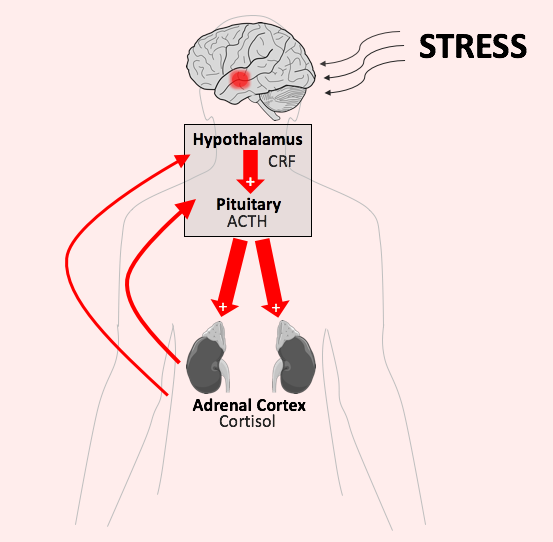
START HERE
START HERE
Why Zebras Don’t Get Ulcers
Robert Sapolsky
Mandatory reading for our trainers (and suggested for our athletes) to establish a better understanding of stress and its implications on the body. Sapolsky summarizes the research, provides entertaining stories, and makes the information easily digestible at any level. If you’re a fan of the book, you’ll love his video series mentioned below.
Why Zebras Don’t Get Ulcers
Robert Sapolsky
Mandatory reading for our trainers (and suggested for our athletes) to establish a better understanding of stress and its implications on the body. Sapolsky summarizes the research, provides entertaining stories, and makes the information easily digestible at any level. If you’re a fan of the book, you’ll love his video series mentioned below.
Why We Sleep
Matthew Walker
A primer on the topic of sleep, it’s importance, practical applications and more, written for the general population. It’s an overview of pretty much everything you’d need to know to get your feet wet but far from the depth you’d find in a textbook. We recommend it to our athletes (and parents) as an alternative to just telling them to stop playing Fortenite and go to bed.
Why We Sleep
Matthew Walker
A primer on the topic of sleep, it’s importance, practical applications and more, written for the general population. It’s an overview of pretty much everything you’d need to know to get your feet wet but far from the depth you’d find in a textbook. We recommend it to our athletes (and parents) as an alternative to just telling them to stop playing Fortenite and go to bed.
Tales From Both Sides of the Brain
Michael Gazzaniga
Want an introduction into how the brain processes information from the “father of cognitive neuroscience”? This looks at his split-brain theory, how each side of the brain processes separate information, connects and communicates with the other, while also reflecting on his personal relationship with science. A fascinating topic that is delivered through engaging and accessible writing style. Gazzinaga has authored multiple other books but this is my favourite — that is, until his newest one comes out in April 2019.
Tales From Both Sides of the Brain
Michael Gazzaniga
Want an introduction into how the brain processes information from the “father of cognitive neuroscience”? This looks at his split-brain theory, how each side of the brain processes separate information, connects and communicates with the other, while also reflecting on his personal relationship with science. A fascinating topic that is delivered through engaging and accessible writing style. Gazzinaga has authored multiple other books but this is my favourite — that is, until his newest one comes out in April 2019.
The Performance Cortex
Zach Schonbrun
One of my top reads of 2018. In The Performance Cortex, Schonbrun presents the next wave of technology & innovation, the science behind it, and how the sports performance world is on the verge of a major shift. If you’re a baseball fan and the book cover doesn’t grab you, then I don’t know what will.
The Performance Cortex
Zach Schonbrun
One of my top reads of 2018. In The Performance Cortex, Schonbrun presents the next wave of technology & innovation, the science behind it, and how the sports performance world is on the verge of a major shift. If you’re a baseball fan and the book cover doesn’t grab you, then I don’t know what will.
NEXT STEPS
NEXT STEPS
The Brain that Changes Itself
Norman Doidge
The concept of neuroplasticity is something that we should all be familiar with as coaches. Our brains are adaptable, resilient, and malleable, much more so than we may have been previously led to believe. This is not a light read – it’s almost 450 pages – but Doidge does a good job of keeping the flow going .
The Brain that Changes Itself
Norman Doidge
The concept of neuroplasticity is something that we should all be familiar with as coaches. Our brains are adaptable, resilient, and malleable, much more so than we may have been previously led to believe. This is not a light read – it’s almost 450 pages – but Doidge does a good job of keeping the flow going .
Recovery for Baseball: Key Concepts, Thoughts, and Practical Applications
Stephen Osterer
My first shot at writing something more substantial than a blog post, Recovery for Baseball was written more out of necessity. As I write this, there is still no specific resource dedicated to the recovery process in baseball, a sport that sees both a high volume and density of games as well non-contact injuries. It includes a lengthy build-up of theory and common misconceptions before heading into practical application, videos, and its own monitoring workload document.
Recovery for Baseball: Key Concepts, Thoughts, and Practical Applications
Stephen Osterer
My first shot at writing something more substantial than a blog post, Recovery for Baseball was written more out of necessity. As I write this, there is still no specific resource dedicated to the recovery process in baseball, a sport that sees both a high volume and density of games as well non-contact injuries. It includes a lengthy build-up of theory and common misconceptions before heading into practical application, videos, and its own monitoring workload document.
Incognito: the Secret Lives of the Brain
David Eagleman
Incognito unravels what goes on behind the scenes in the brain, from visual illusions to synesthesia, without getting too heavy into the neuroscience. It’s a lighter read but a fascinating look at the unconscious and how much of our perception of the world is hidden.
Incognito: the Secret Lives of the Brain
David Eagleman
Incognito unravels what goes on behind the scenes in the brain, from visual illusions to synesthesia, without getting too heavy into the neuroscience. It’s a lighter read but a fascinating look at the unconscious and how much of our perception of the world is hidden.
DEEPER DIVE
DEEPER DIVE
Recovery for Performance in Sport
Edited by Mujika, Hausswirth
A phenomenal reference textbook on recovery, with each chapter reviewing, critiquing, and summarizing the available scientific literature. Just a few of the chapters include: fundamentals of fatigue and physiology, periodizing and managing recovery, psychological aspects of recovery and more. If you’re interested in going deeper into the subject than what I could do in Recovery for Baseball then this is a good next step for you.
Recovery for Performance in Sport
Edited by Mujika, Hausswirth
A phenomenal reference textbook on recovery, with each chapter reviewing, critiquing, and summarizing the available scientific literature. Just a few of the chapters include: fundamentals of fatigue and physiology, periodizing and managing recovery, psychological aspects of recovery and more. If you’re interested in going deeper into the subject than what I could do in Recovery for Baseball then this is a good next step for you.
Allostasis, Homeostasis, and the Physiological Cost of Adaptation
Edited Jay Schulkin
Most people understand the concept of homeostasis – that our bodies maintain a relatively constant internal environment. Yet, as the authors posit, this model of equilibrium is outdated and the concept of allostasis – stability through change – more accurately reflects biology. This subtlety makes a world of difference when framing the imposition of stressors and is the central theme of the book. With many contributing authors, this book is thorough, full of scientific studies, and requires quite some time to digest.
Allostasis, Homeostasis, and the Physiological Cost of Adaptation
Edited Jay Schulkin
Most people understand the concept of homeostasis – that our bodies maintain a relatively constant internal environment. Yet, as the authors posit, this model of equilibrium is outdated and the concept of allostasis – stability through change – more accurately reflects biology. This subtlety makes a world of difference when framing the imposition of stressors and is the central theme of the book. With many contributing authors, this book is thorough, full of scientific studies, and requires quite some time to digest.
The Cognitive Neurosciences
Edited by Gazzaniga, Mangun
My go-to neuroscience reference textbook for building my biological first principles. This is for the hardcore looking to improve their understanding, this is certainly not for everyone. If you didn’t take biology in university, this is as dense as they come. Good luck.
The Cognitive Neurosciences
Edited by Gazzaniga, Mangun
My go-to neuroscience reference textbook for building my biological first principles. This is for the hardcore looking to improve their understanding, this is certainly not for everyone. If you didn’t take biology in university, this is as dense as they come. Good luck.
OTHER RESOURCES
OTHER RESOURCES
VIDEOS
The Limbic System – Robert Sapolsky at Standford. Or just watch the entire lecture series over the course of a few months if you’re into it. It’s incredible.
Being And Computing: Are You Your Brain, and is Your Brain a Computer? – Andy Clark
ARTICLES & POSTS
Pain and Stress in a Systems Perspective – Chapman et al (2008)
Optimizing Sleep to Maximize Performance: Implications and Recommendations for Elite Athletes – Simpson et al. (2017)
Clarifying the Roles of Homeostasis and Allostasis in Physiological Regulation – Ramsay et al (2014)
Recovery and Performance for Sport: a Consensus Statement – Kellman et al (2018)
The Resting Tone of the Nervous System – Seth Oberst
Habits, Conditioning, and the Plastic Paradox – Seth Oberst
VIDEOS
The Limbic System – Robert Sapolsky at Standford. Or just watch the entire lecture series over the course of a few months if you’re into it. It’s incredible.
Being And Computing: Are You Your Brain, and is Your Brain a Computer? – Andy Clark
ARTICLES & POSTS
Pain and Stress in a Systems Perspective – Chapman et al (2008)
Optimizing Sleep to Maximize Performance: Implications and Recommendations for Elite Athletes – Simpson et al. (2017)
Clarifying the Roles of Homeostasis and Allostasis in Physiological Regulation – Ramsay et al (2014)
Recovery and Performance for Sport: a Consensus Statement – Kellman et al (2018)
The Resting Tone of the Nervous System – Seth Oberst
Habits, Conditioning, and the Plastic Paradox – Seth Oberst
Why should you care learning about other topics?
Why should you care learning about other topics?
At this point, you might be thinking to yourself “why in the heck would I bother getting into neuroscience or complexity books? I’m a pitching coach.” Well, once you do consider some of the concepts in complex systems, you’ll hopefully begin to realize how integrated, interactive, and interconnected the human body is.
Yes, you may just be a person working within a specific performance silo – like a pitching coach or a therapist – but whatever it is that you’re trying to accomplish is inevitably inseparable from everything else.
There is no true isolation.
Let’s say you’re attempting to address a pitcher’s lead leg stability with some new drill work. You’re really honed into their movement in the warm-up, your cuing strategy, and altering the task constraints, but the athlete is still not improving.
What’s the next move or line of thought?
“I have yet to see any problem, however complicated, which, when looked at in the right way, did not become still more complicated” – Poul Anderson
Human biology, and performance, is an insanely complex system. And a complex system is much more than just a collection of cells.
It’s more than the sum of its parts.
A system consists of three kinds of things: elements, interconnections, and a function. Elements of a baseball pitcher, for example, could be their muscle fibres, joints, emotions, bone structure, among many other possibilities. In fact, once you start getting into the process of identifying the elements, you’ll start to see that there are sub-elements. And that these sub-elements have their own sub-elements. And so on, and so forth.
As the late Donella Meadows suggested in her book, Thinking in Systems,
“It’s a good idea to stop dissecting out elements and start looking for the interconnections, the relationships that hold the elements together.”
If we are going to be solving the problem of baseball performance (a systems problem), it would be wise to investigate how these elements are connected. What we don’t want to do is get so bogged within the elements that we lose sight of the system itself. “We don’t want to lose sight of the forest for the trees.”
It is with that in mind that I believe our efforts as coaches, therapists, strength coaches, and other members of the performance team shouldn’t be directed entirely towards our own elements. We want to master our domain, but simultaneously we should be expanding our web of knowledge so that we can better see the relationships between the elements.
As Edward O Wilson would argue, we are striving for consilience:
“A ‘jumping together’ of knowledge by the linking of facts and fact-based theory across disciplines to create a common groundwork of explanation.”
This is the model that we strive for at BDG.
At this point, you might be thinking to yourself “why in the heck would I bother getting into neuroscience or complexity books? I’m a pitching coach.” Well, once you do consider some of the concepts in complex systems, you’ll hopefully begin to realize how integrated, interactive, and interconnected the human body is.
Yes, you may just be a person working within a specific performance silo – like a pitching coach or a therapist – but whatever it is that you’re trying to accomplish is inevitably inseparable from everything else.
There is no true isolation.
Let’s say you’re attempting to address a pitcher’s lead leg stability with some new drill work. You’re really honed into their movement in the warm-up, your cuing strategy, and altering the task constraints, but the athlete is still not improving.
What’s the next move or line of thought?
“I have yet to see any problem, however complicated, which, when looked at in the right way, did not become still more complicated” – Poul Anderson
Human biology, and performance, is an insanely complex system. And a complex system is much more than just a collection of cells.
It’s more than the sum of its parts.
A system consists of three kinds of things: elements, interconnections, and a function. Elements of a baseball pitcher, for example, could be their muscle fibres, joints, emotions, bone structure, among many other possibilities. In fact, once you start getting into the process of identifying the elements, you’ll start to see that there are sub-elements. And that these sub-elements have their own sub-elements. And so on, and so forth.
As the late Donella Meadows suggested in her book, Thinking in Systems,
“It’s a good idea to stop dissecting out elements and start looking for the interconnections, the relationships that hold the elements together.”
If we are going to be solving the problem of baseball performance (a systems problem), it would be wise to investigate how these elements are connected. What we don’t want to do is get so bogged within the elements that we lose sight of the system itself. “We don’t want to lose sight of the forest for the trees.”
It is with that in mind that I believe our efforts as coaches, therapists, strength coaches, and other members of the performance team shouldn’t be directed entirely towards our own elements. We want to master our domain, but simultaneously we should be expanding our web of knowledge so that we can better see the relationships between the elements.
As Edward O Wilson would argue, we are striving for consilience:
“A ‘jumping together’ of knowledge by the linking of facts and fact-based theory across disciplines to create a common groundwork of explanation.”
This is the model that we strive for at BDG.

